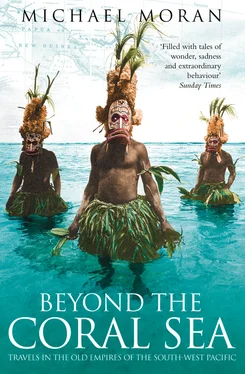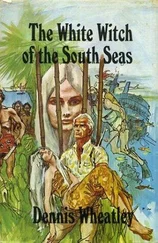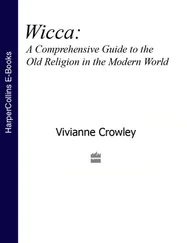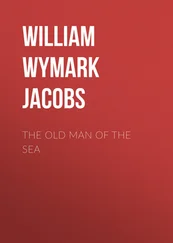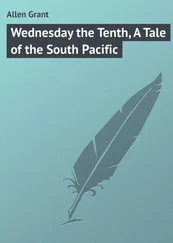I switched off his daughter’s music. Mass tourism on the scale of Fiji or Vanuatu is an impossible, even undesirable dream on Samarai. The situation seemed ineffably melancholic.
‘I’m sure you’re right. Well, I think I might go to bed, Wallace. Could you switch on the water pump?’
‘The pastor will be here in the morning. Everything will be fine.’ His voice trailed away as I climbed the bare stairs.
The air in the bedroom was hot and thick. Garish streetlamps lit the window covered by a thin curtain printed with a tropical landscape hung upside down. I switched on the fan and went for a shower. Huge cockroaches crawled up from the drain but fled as the water fell. I pulled the string that promised hot water but with no result. A blessed coolness bathed me, the effect remaining for a full two minutes. I was slightly worried about being unable to lock the door and decided to sleep with my passport and wallet under my pillow.
I had felt insecure about my personal safety and possessions ever since my arrival in Papua New Guinea. There is something in the air that combines with the menacing expression in the male Melanesian face that is unsettling to a European. The dark and brooding sensibility of the men in particular, creates an ever-present feeling of threat. I felt my presence was tolerated but deeply resented. Smiles shielded a deeper animosity; an ancient impenetrable psyche lay behind those dark eyes. I was not wanted here, the past was resented and there was jealousy of my imagined riches. Covetous glances settled on my belongings. Serious health risks could not be avoided. So came upon me the first temptation to abandon the whole enterprise and return to Sydney. This was to become a common feeling I was forced to fight. Only the idyllic beauty of the islands, the complex cultures and the occasional warm personality kept me travelling. Wallace was a truly good man, but what had it brought him? Theft, vandalism and betrayal. I lay on the bed and stared at the fly-spotted ceiling. The lonely Anglican bell marked the passage of European time. A solitary bird was singing, a species that sings after sunset for the entire night.
Whispers below my window woke me. I could see some youths had clustered around the marble obelisk and were looking up at my window and pointing. I remembered the Catholic priest at Alotau. ‘They know where you are, if you’re asleep, he hasn’t locked his door … oh yes.’ They wandered away at length and the memorial was bathed in moonlight.
The story of how this obelisk came to be erected is one of the legendary tales of this Province. It began with the cannibalistic murder in 1901 of one of the first missionaries to come to Eastern New Guinea, the Scotsman, the Reverend James Chalmers. He was a friend of Robert Louis Stevenson who described him as ‘an heroic card … a big, stout, wildish-looking man as restless as a volcano and as subject to eruptions’. He was as much an explorer and adventurer as a missionary. The title of his book Work and Adventure in New Guinea (1885) describes his attitude to missionary activity succinctly. On one occasion tracing a journey on a map in a village hut, he noticed that drops of liquid had begun to fall from a bulky package lodged in the roof. Grandmother’s remains were being dried by her grandson. In many parts of the country the corpse was not buried immediately after death but retained by the family, placed on a platform outside the hut, perhaps smoked and stored or the remains given to the children to play with. In this way the relatives clung to the spirit of the dead for some time after the passing of the body. ‘It quite spoiled our dinner,’ Chalmers laconically commented later.
His book is full of bizarre cultural descriptions. One of the most celebrated is that of the ‘man-catcher’. This was a hoop of rattan cane attached to a bamboo pole that concealed a spike. The hoop was slipped over the head or body of the fleeing victim and then suddenly jerked tight. The spike would penetrate the base of the skull or spine, neatly severing the spinal cord. Ernie had told me during our talk on the wharf that Chalmers carried a Bible under one arm and a shotgun under the other as the instruments of conversion. Certainly not your average missionary, more an aggressive soldier of Christ unwittingly preparing the ground for the arrival of the colonial service.
The charismatic Chalmers was known as ‘Tamate’ by the people of Rarotonga. He was a fine figure of a Victorian gentleman and possessed a head as noble as that of the composer Brahms. Both his formidable wives succumbed to malaria. He writes of having to exhibit his chest to the warriors on numerous occasions each day. One friendly chief offered his wife a piece of human breast at a feast, declaring it a highly-prized delicacy. Chalmers wryly observed that this was the end of his chest exhibitions in that part of the country.
In 1901 the London Missionary Society schooner Niue set sail along the coast of the Gulf of Papua from Daru. It anchored off the ironically named Risk Point on Goaribari Island near the mouth of the River Omati. This area was well known as one of the most dangerous parts of New Guinea, an area of torrid mudflats and swamp crawling with tiny crabs and fierce cannibals. Early on the morning of 8 April some warriors with faces and shaven heads painted scarlet, their eyes ringed in black, paddled out to the vessel in a fleet of canoes and persuaded a landing party to come ashore. The unarmed Chalmers and his young and inexperienced assistant Oliver Tomkins, together with ten mission students from Kiwai Island and a tribal chief, landed from the whaleboat in a creek close to the village of Dopima. Chalmers had attempted to convince Tomkins to stay on board but the intrepid youth would have none of it. The warriors trembled and giggled with excitement, their cassowary plumes and long tails of grass swishing and shivering in anticipation. The Europeans entered the enormous dubu or men’s longhouse, all six hundred feet of it, and greeted the occupants. The air of the long, gloomy tube was thick with suffocating smoke and heavy with acrid odours. Rows of enemy skulls by the hundreds were arranged on shelves and racks, some fixed to macabre carved figures hanging from the roof.
The visitors were immediately struck from behind with stone clubs, and fell senseless to the floor. Tomkins managed to escape as far as the beach but was brought down with spears. This was the signal for a general massacre. Chalmers was stabbed with a cassowary dagger and his head was immediately cut off. Tomkins and the rest of the party of young mission boys suffered the same fate. The bodies were cut up and the pieces given to the women to cook. The flesh was mixed with sago to produce a monstrous stew and eaten the same day. The heads were divided among various individuals and quickly concealed from view. Ironically, the party who had expected to return to the schooner for breakfast had unexpectedly become breakfast. The Niue meanwhile had been boarded by a canoe raiding party and looted. The Captain managed to get under way and brought the grisly news of the slaughter to the wretched settlement of Daru.
After twenty-five years working among the ‘skull-hunters’, it is surprising that Chalmers allowed himself to be fooled. He was famous for possessing an infallible instinct for reading primitive moods and knowing when to leave. The precise reason for the butchery is unknown but there is speculation that he insisted on visiting in the middle of a ceremony that was forbidden to outsiders.
That this was an unprovoked cannibal murder rather than a revenge killing was clear. A punitive expedition was mounted three weeks later from Port Moresby. When the Government steam-yacht Merrie England (a most versatile vessel that reportedly could ‘go anywhere and do anything’) finally left Goaribari, some twenty-four warriors lay dead, many wounded and all the sacred men’s longhouses on fire. But the heads of Chalmers and Oliver had not yet been recovered.
Читать дальше
